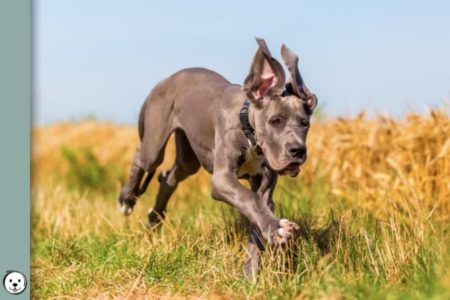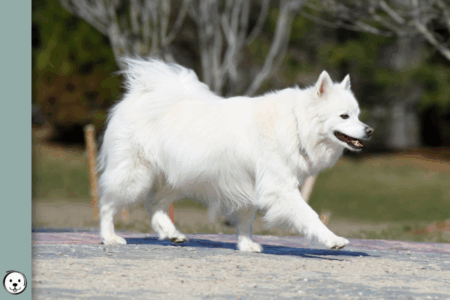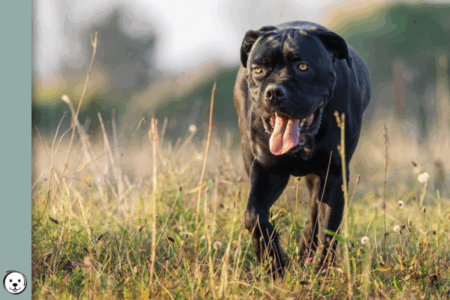Dogs with just one copy of a saddle pattern often express creeping tan. This is a pattern with bigger-than-average tan markings that are not yet large enough to qualify as classic saddle tan.
What Is Creeping Tan?
Creeping tan is a version of saddleback.
But these dogs express an extended black saddle with large tan markings.


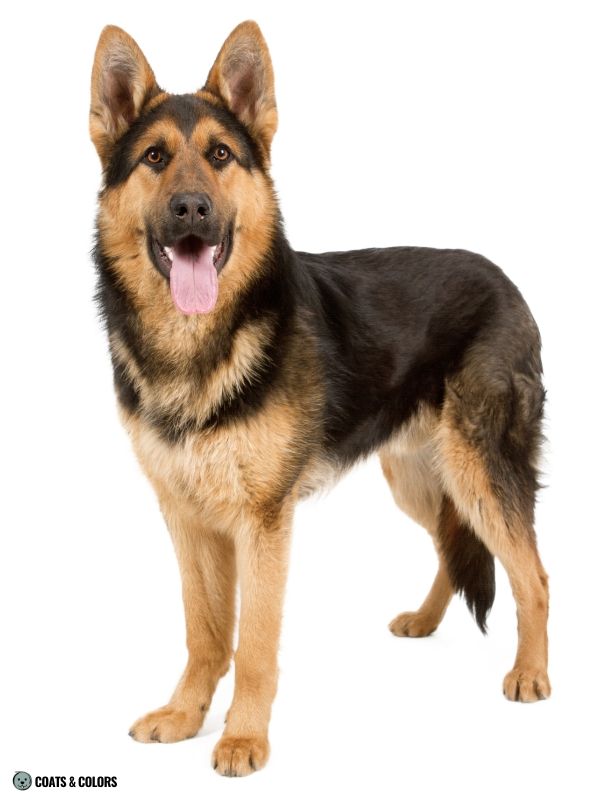
Creeping tan is an intermediate phenotype between black and tan and saddle tan. There is a continuum of creeping tan phenotypes with some dogs having way more black than others.



All puppies with a saddle allele are born with a classic tan point-type pattern.
In dogs with two copies of a saddle pattern (asa/asa = ASIPBS/ASIPBS), the black will then recede into a proper saddleback pattern with a small eumelanic saddle on an otherwise mostly tan coat.
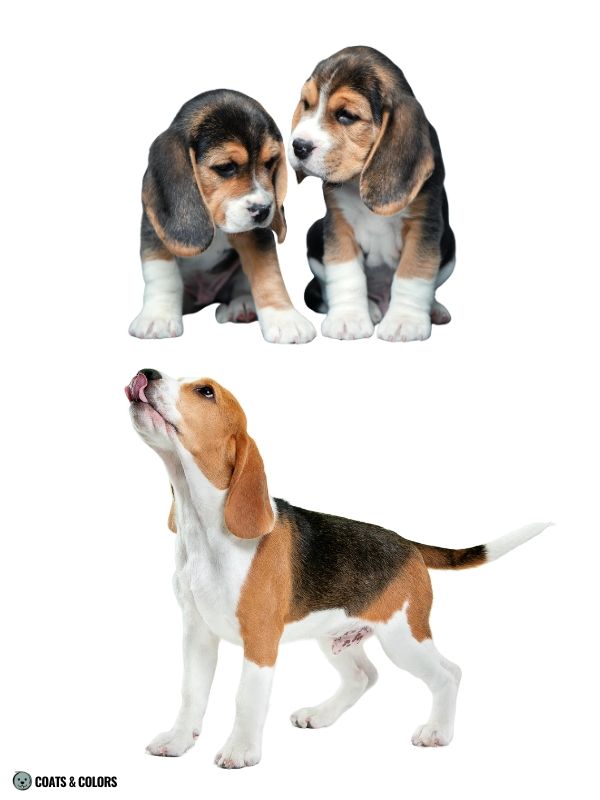
There is some variation to classic saddle tan. Black saddles can be smallish or extend to the neck, they can be solid black or a little grizzled or faded, and they can have crisp or smutty edges.
Adult saddle dogs typically show tan on their head, shoulders, and thighs.

saddle tan
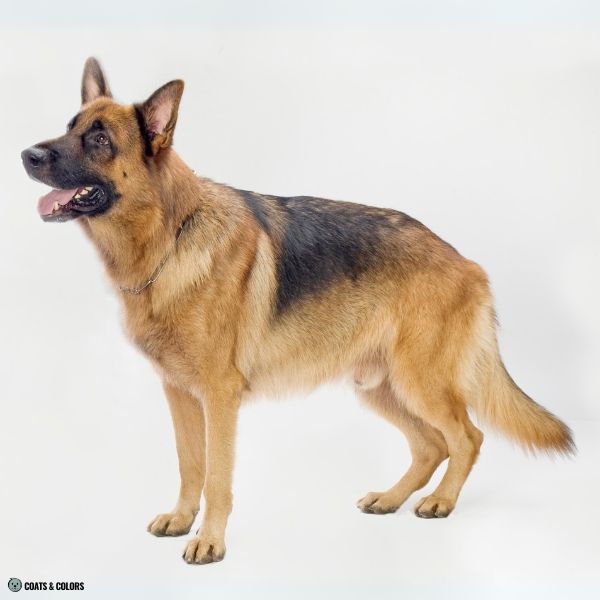
saddle tan & mask

saddle tan & white
However, dogs with just one copy of a saddle pattern can have anything from classic saddle tan to just an “open-faced” creeping tan pattern. Their black often recedes only halfway.
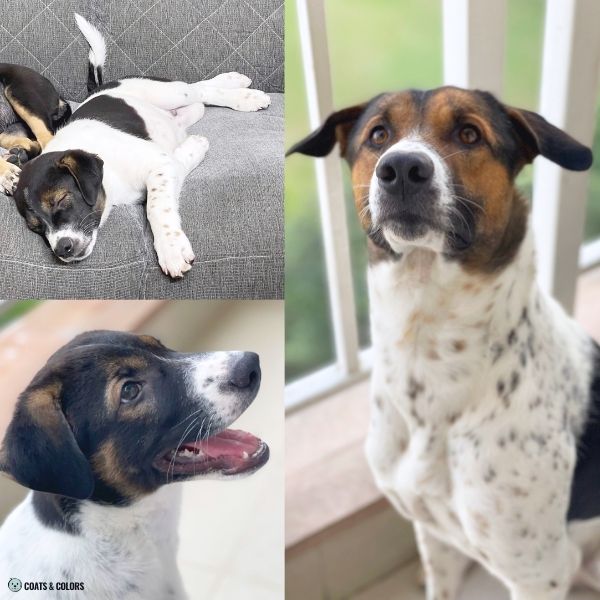
Creeping tan is an intermediate pattern where the tan markings are too extended for black and tan but the saddle is yet too large to qualify as a classic saddleback. Not quite this, not quite that.
Adult creeping tan dogs typically show black on their head, neck, shoulders, chest, and thighs.
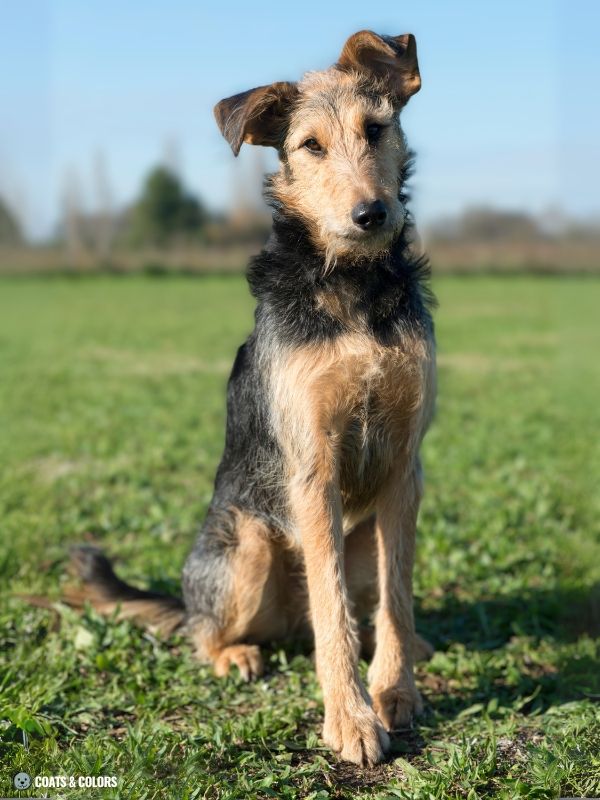
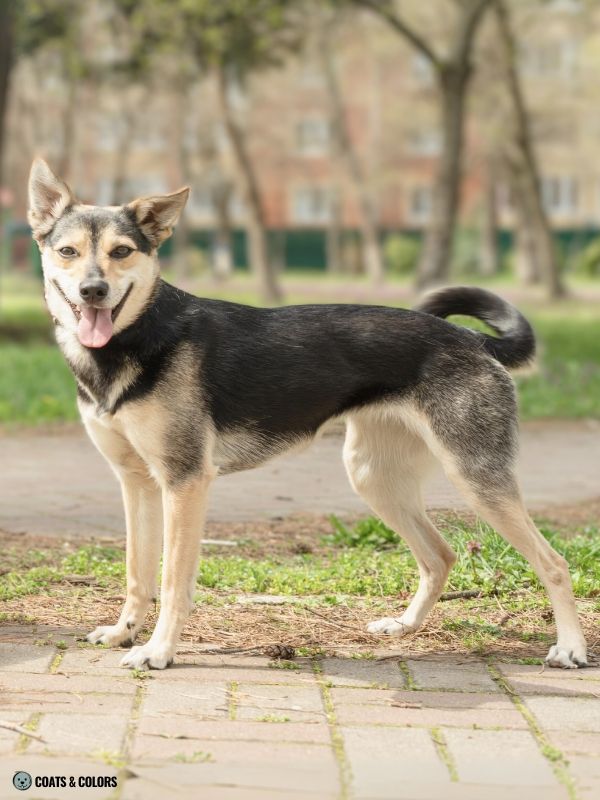
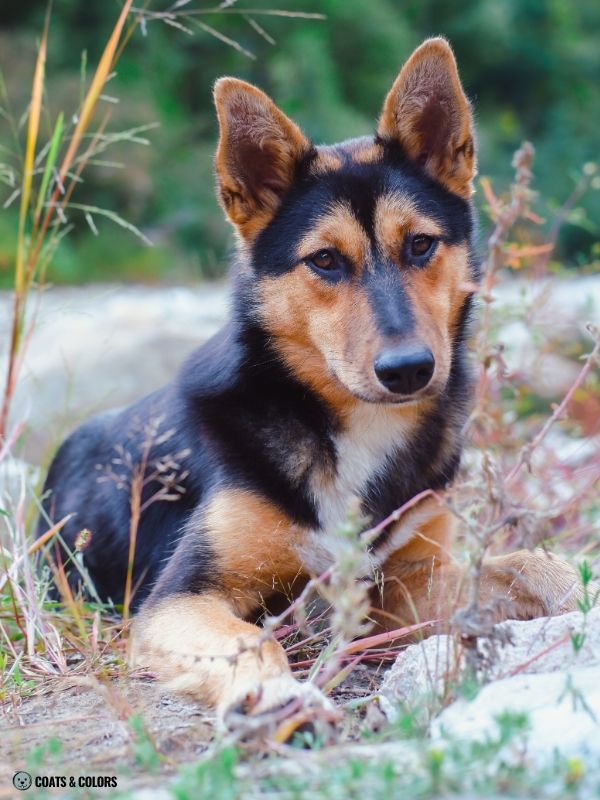
The black in a creeping tan pattern often extends downwards onto the upper arms and thighs, and upwards onto the neck and top of the head and tail.
The tan markings create an “open-faced” phenotype with a mostly solid tan face. Dogs often show a residual nose bar or a widow’s peak on their forehead.


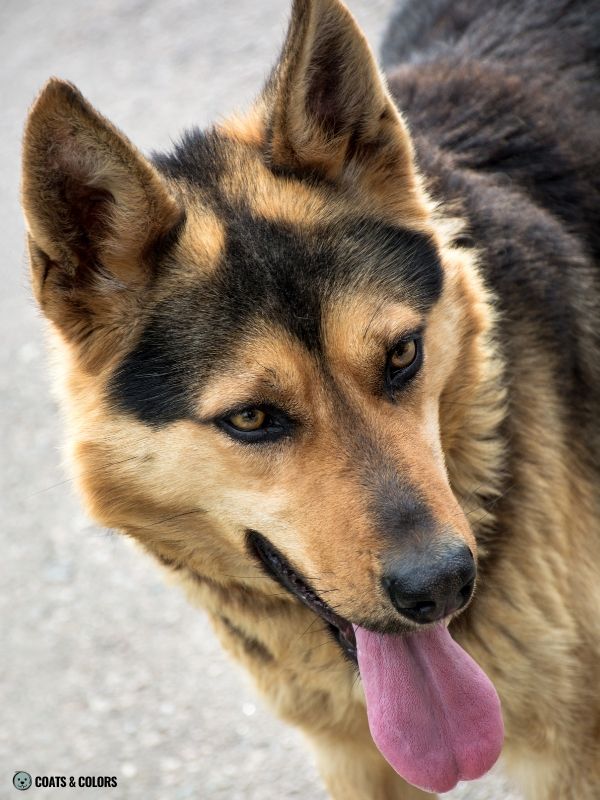
Some breeds think of it as a “tan point with creeping tan“, others call it an “open-faced tan point“.
In Corgis, it qualifies as a “red-headed black with a skull cap”. And some breed like Rat Terriers use their own breed terms such as “calico” or “badger markings“.

saddle tan

creeping tan
Most of these heterozygous saddlebacks carry tan points (asa/at = ASIPBS/ASIPBB) as their second allele. Saddlebacks that carry recessive black (asa/a = ASIPBS/ASIPa) may on average give darker patterns.
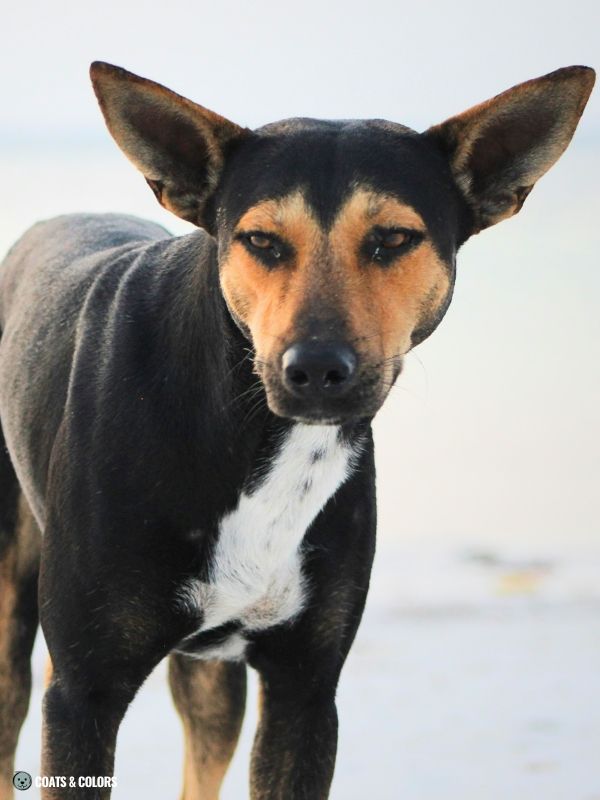
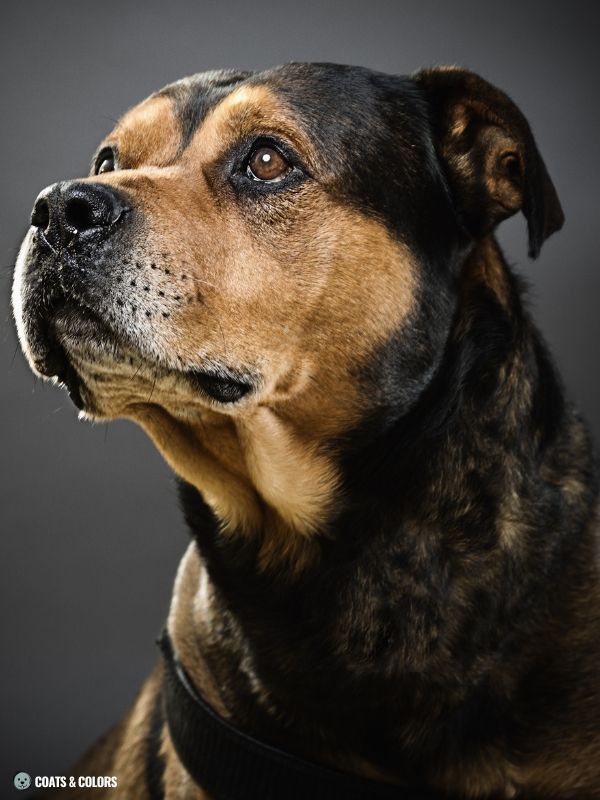
Creeping tan most commonly happens in mixed dogs or in breeds that come with both saddle and tan point patterns. It is also known as a mismark in some breeds such as Australian Cattle Dogs.
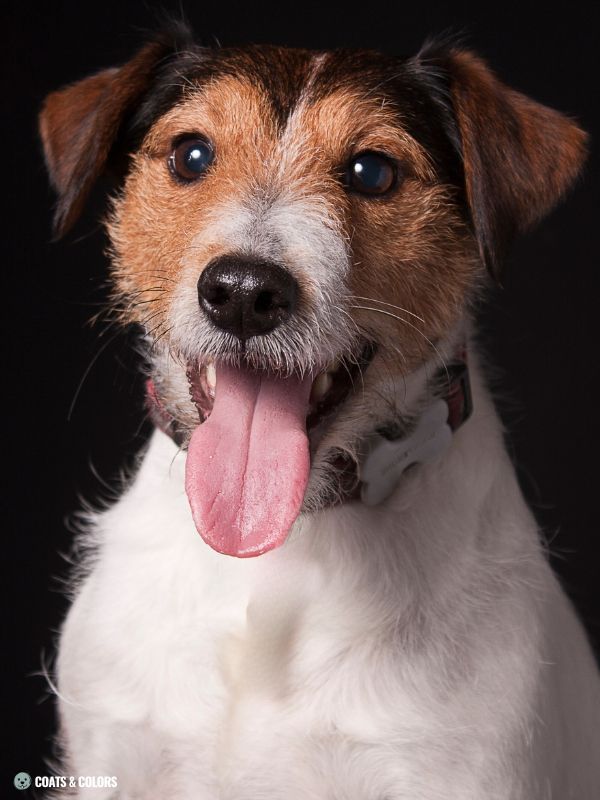
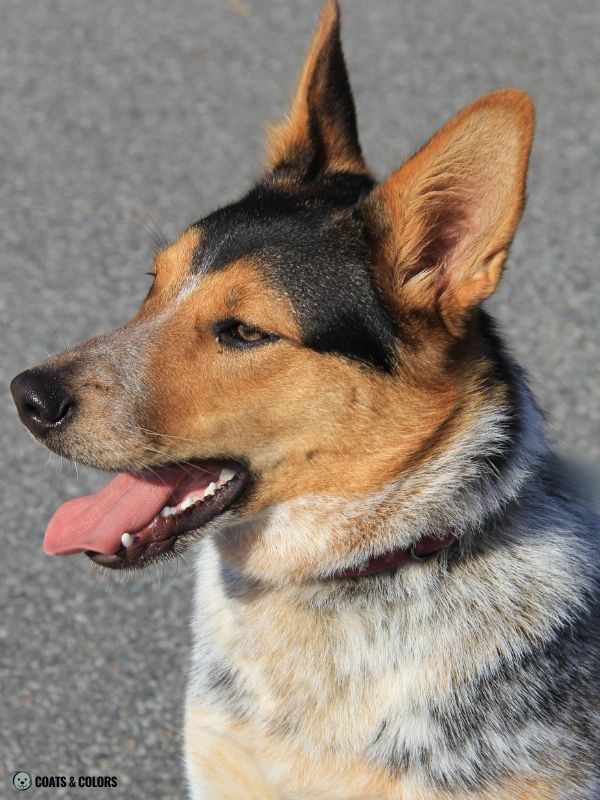

Since this phenotype happens in heterozygous saddle dogs, it can never “breed true”.
Pairing two dogs with a creeping tan pattern (asa/at x asa/at) can result in anything from classic saddle tan (asa/asa) to classic tan point (at/at) or give puppies that may or may not express creeping tan (asa/at).
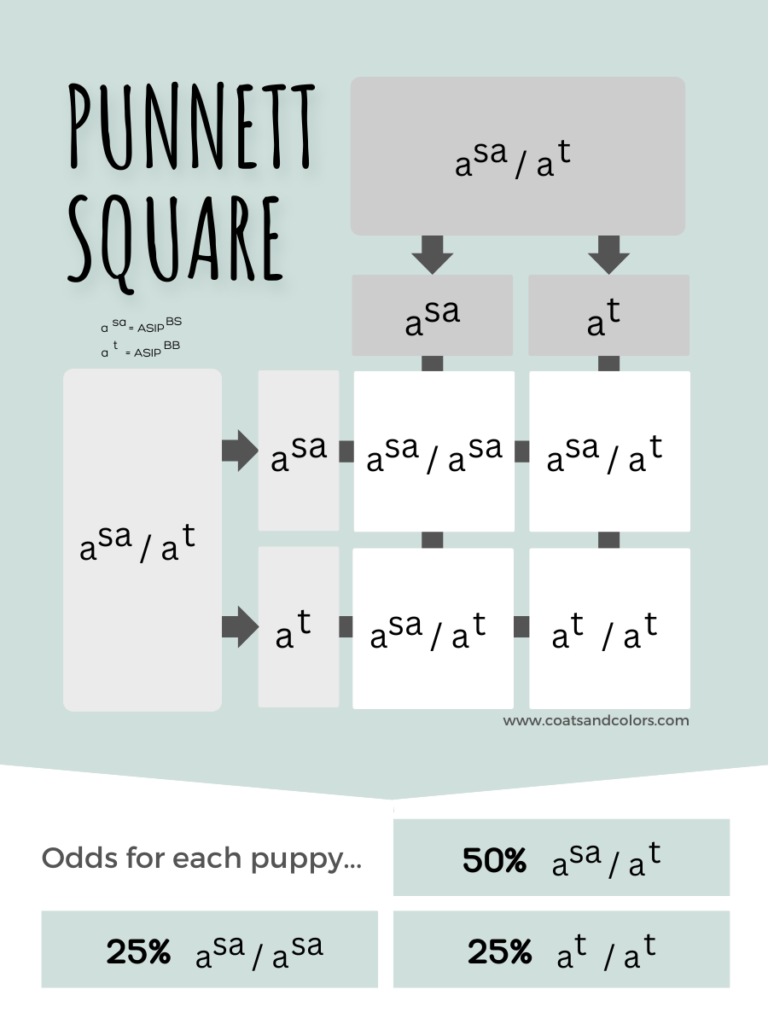
But if you breed a homozygous saddle dog (e.g. Airedales or Yorkies are asa/asa) with a homozygous tan point dog (e.g. Dobermans or Rotties are at/at), you can get only heterozygous puppies (asa/at).
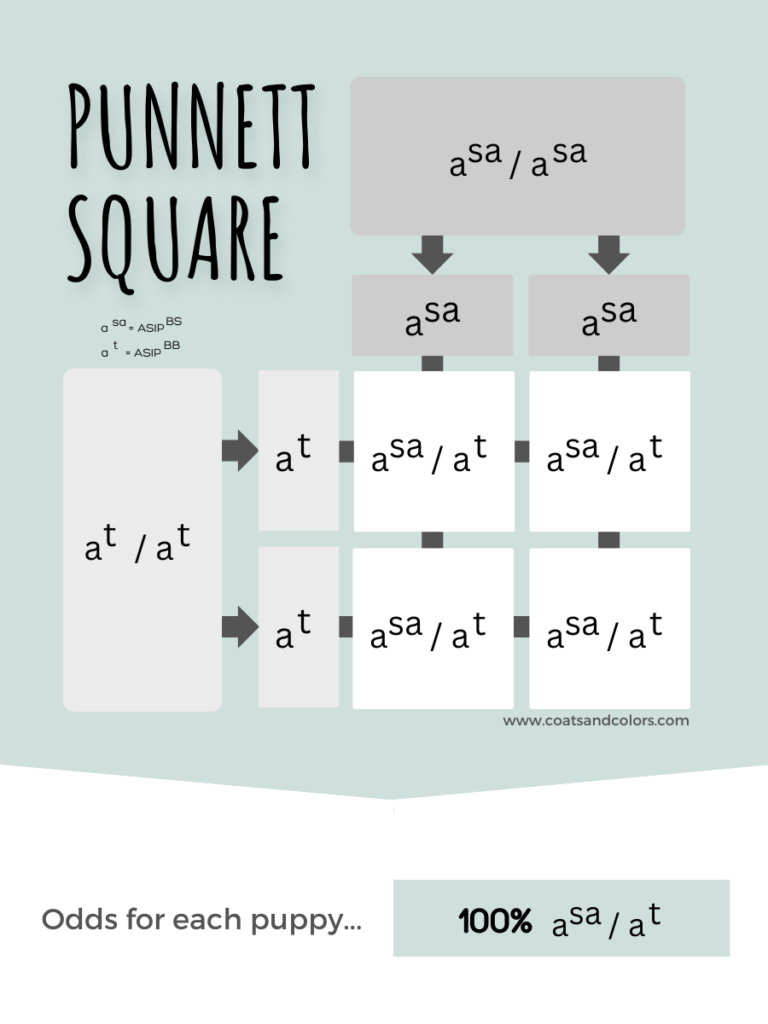
Just keep in mind that heterozygous saddle dogs might not always express creeping tan. Some show a very normal-looking saddle pattern or a just slightly extended saddle.

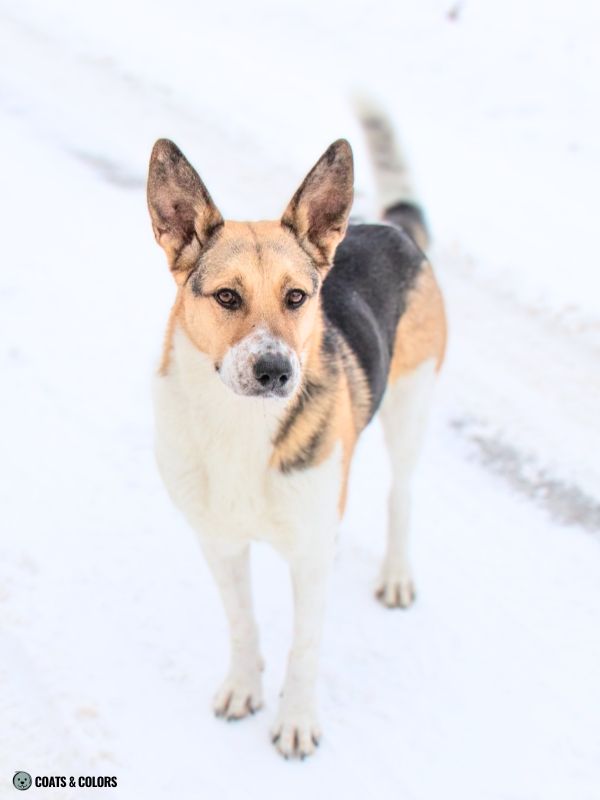
Creeping Tan Variation
Let’s start with creeping tan in different coat types:
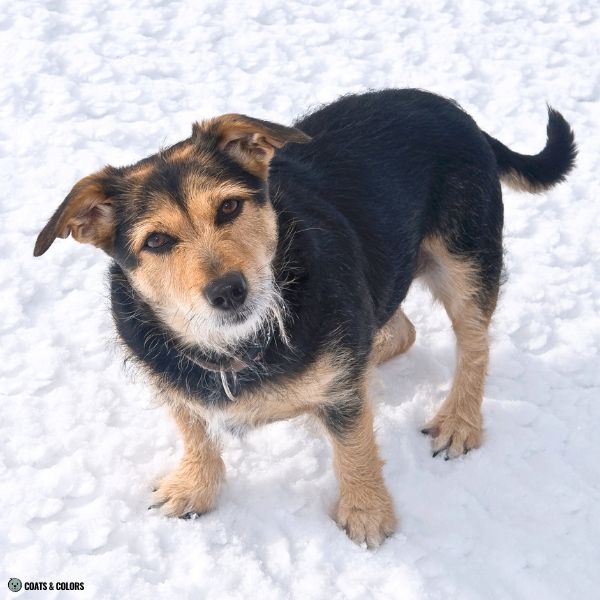


Creeping tan dogs can have any intensity of phaeomelanin.
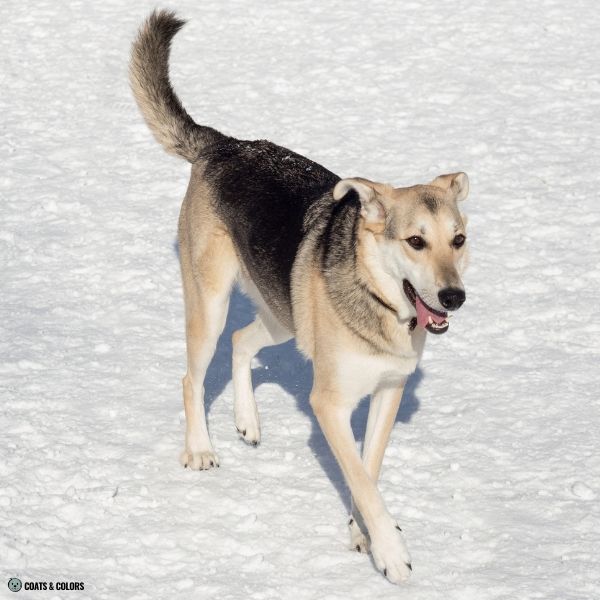
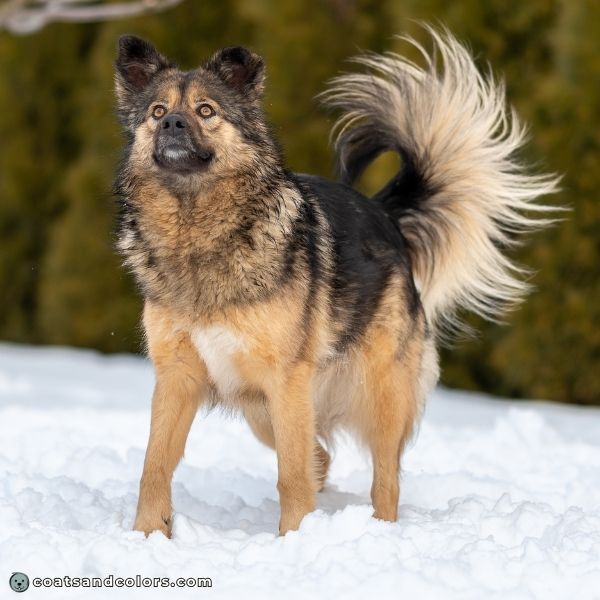
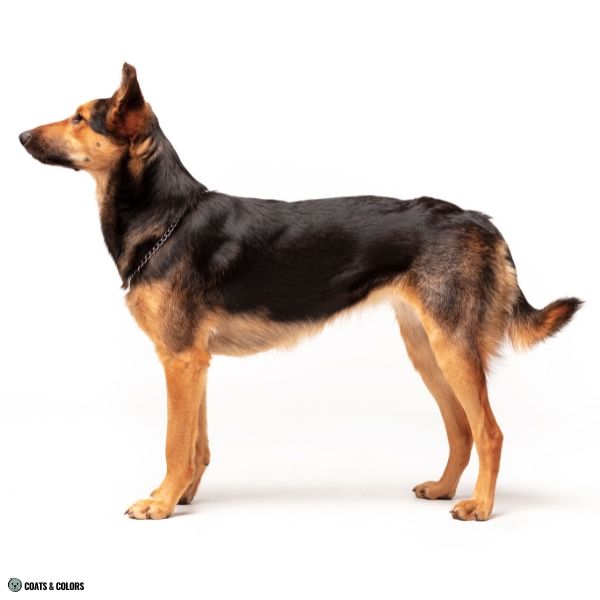
Some dogs with creeping tan have countershading.

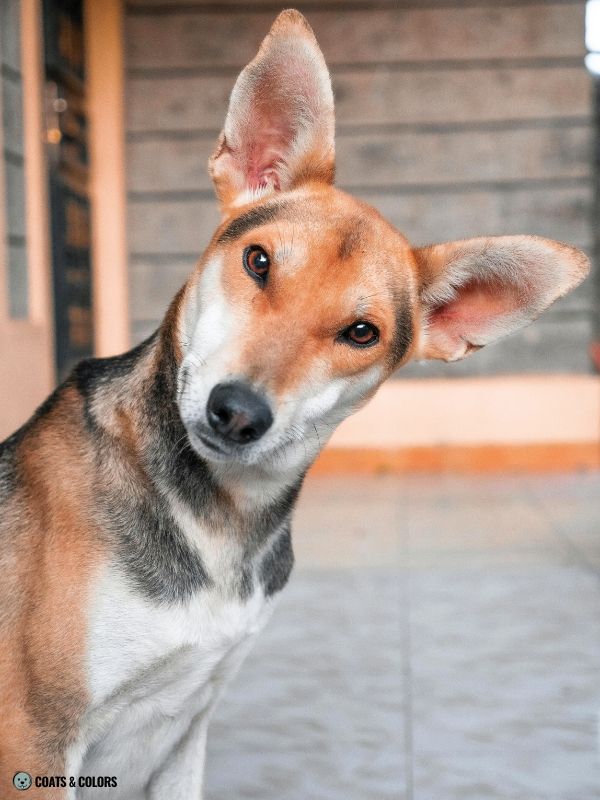

The black eumelanin can be modified to brown, blue, or lilac.
See the B locus and D locus for more.


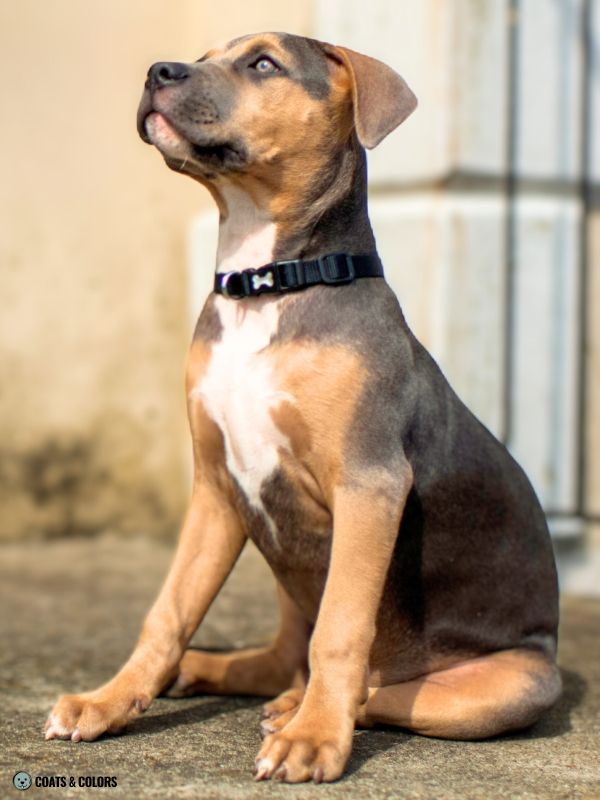
Dogs need to be ky/ky to express their A locus pattern normally. Dogs with kbr/- can also express their A locus patterns such as creeping tan, but with brindle stripes on top.
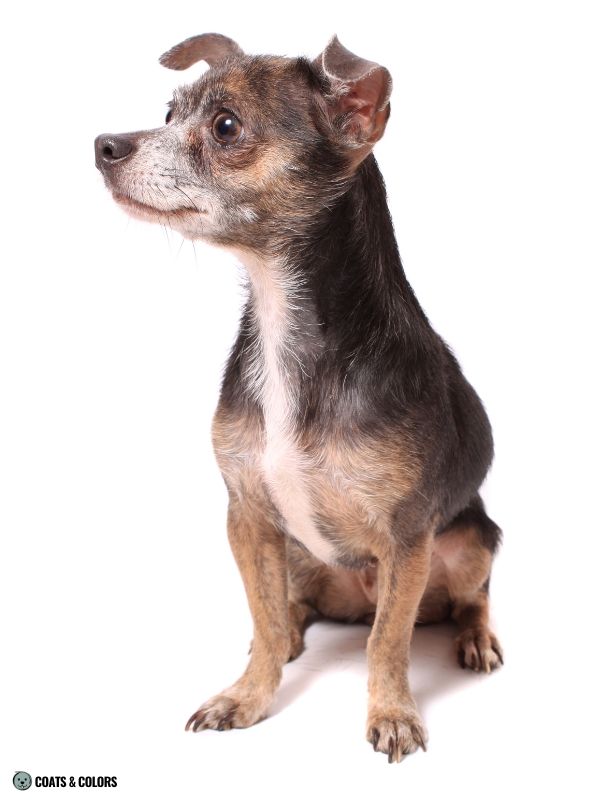
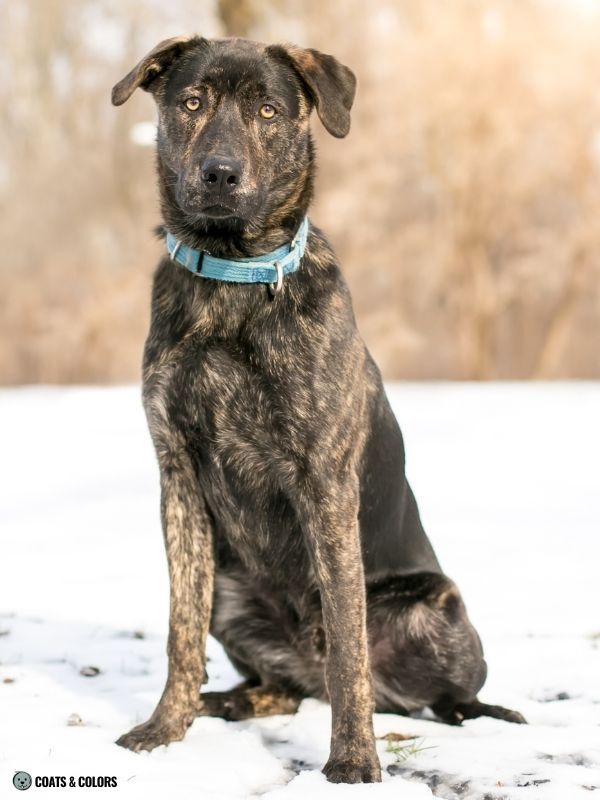
Creeping tan dogs with an Em/- genotype can have a melanistic mask.



Dogs with creeping tan can be domino if they are eA/- (northern domino) or eG/- (grizzle domino).
Domino restricts eumelanin. It will considerably shrink a dog’s saddle area and tends to give pale whiskers, light undercoat, pale phaeomelanin, and lighter hair roots.
Dogs may or may not show a small residual saddle or have just a grizzly black patch on their back.
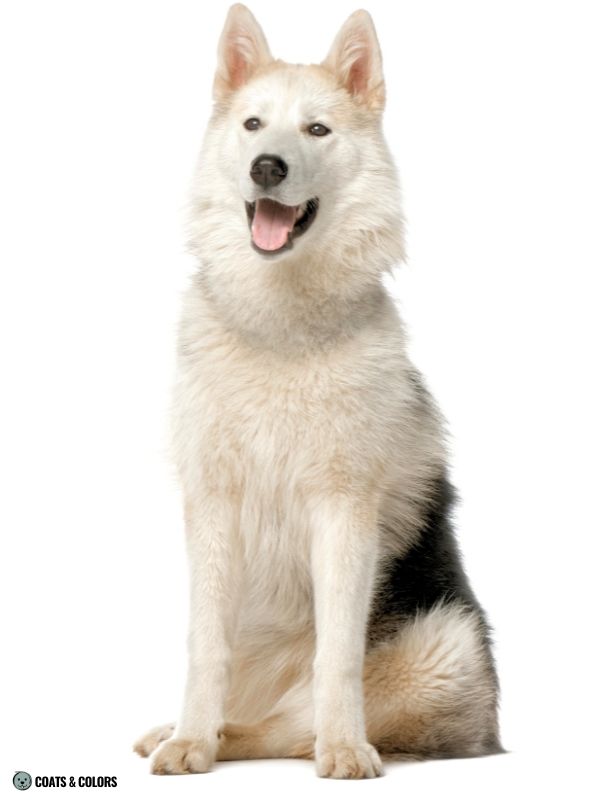
Merle primarily affects eumelanin (only in rare cases will it affect phaeomelanin).
A classic merle pattern will dilute random patches of eumelanin to a lighter color in a creeping tan pattern (e.g. all black areas will have random gray patches).
Shorter merle alleles might cause atypical merle with a more muddy or muted pattern. And some stronger allelic combinations of merle may cause tweed patterns or delete pigment to white.

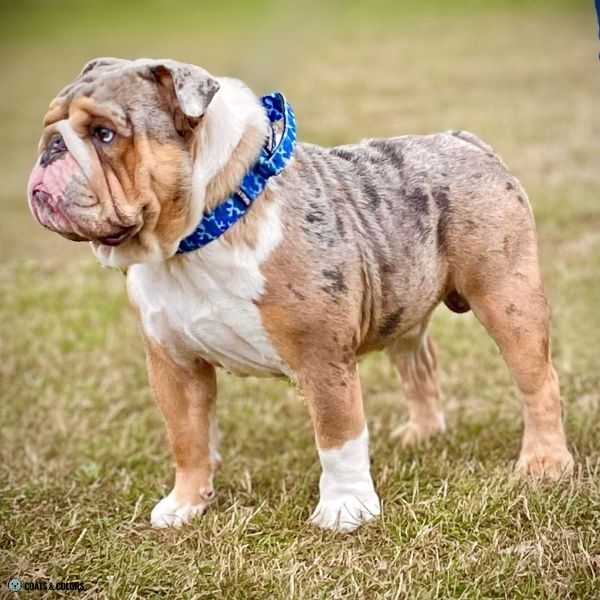
White markings (e.g. from piebald or whitehead) can erase some of the pattern.
Ticking or roan can show inside of white markings.


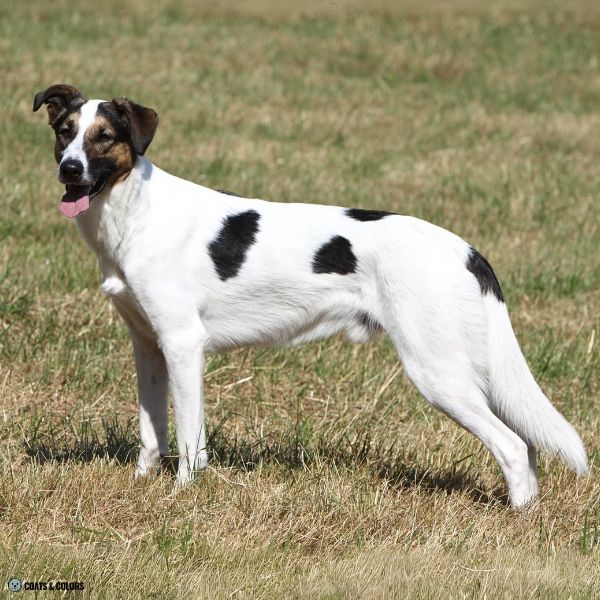
Tan points, creeping tan, and saddles with white are sometimes called tricolor. Add brindle, and you get tricolor brindle also known as “trindle“.
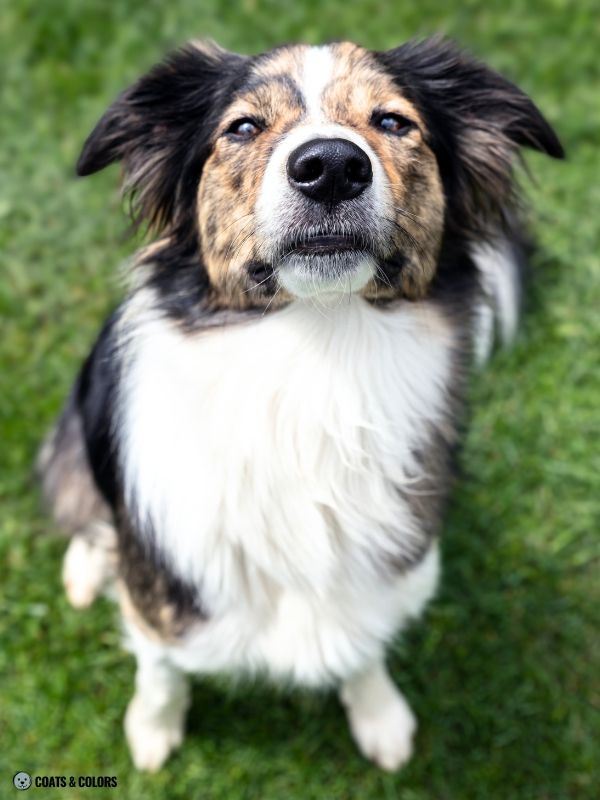
Progressive graying will slowly lighten all the eumelanin, e.g. it will fade black to a silvery gray. This only happens in some furnished dog breeds and their mixes.
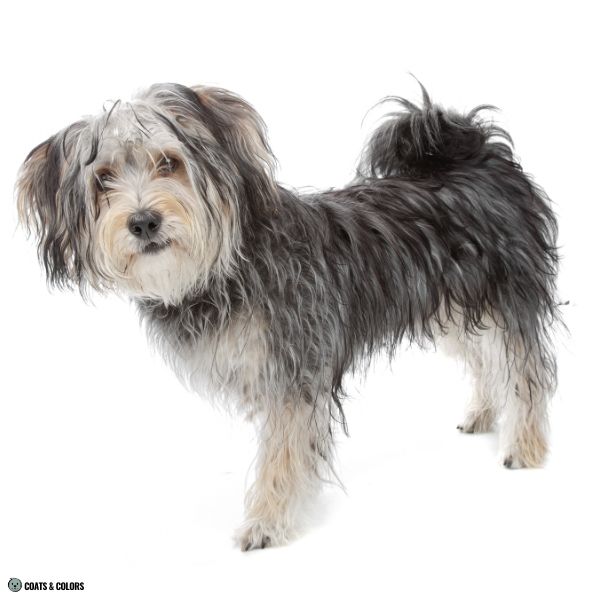
Some solid dominant black dogs show ghost tan in their coat. This happens when their solid black coat is not fully black, and the tan in their masked A locus pattern bleeds through anyway.
In KB/- asa/at dogs, this can cause a “ghost saddle” or “ghost creeping tan pattern” with reddish undertones in place of real tan. Ghost markings can be very bright and almost look like the dog was truly patterned. Or they can be very faint and only give a brownish reddish coppery hue in bright sunlight.
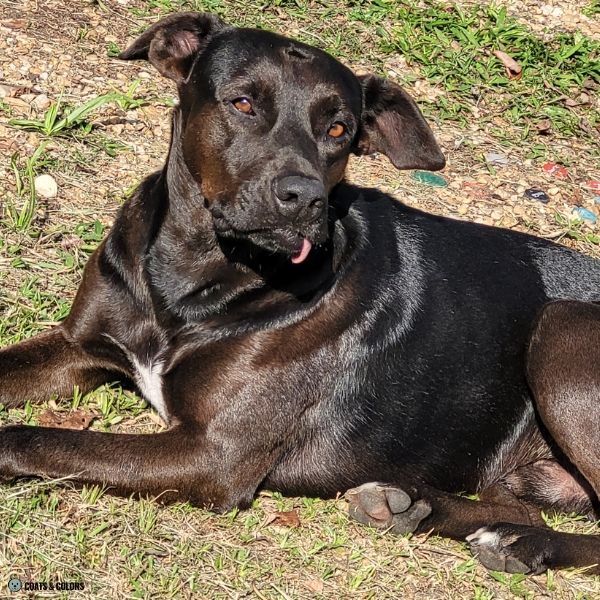
Creeping Tan Look-Alikes
All saddle-patterened puppies, in which the black has not yet completely receded, will have a creeping tan look for a while. Just that their tan will creep further until only a black saddle remains.
And it’s normal for homozygous saddle dogs to keep some black on top of their head.
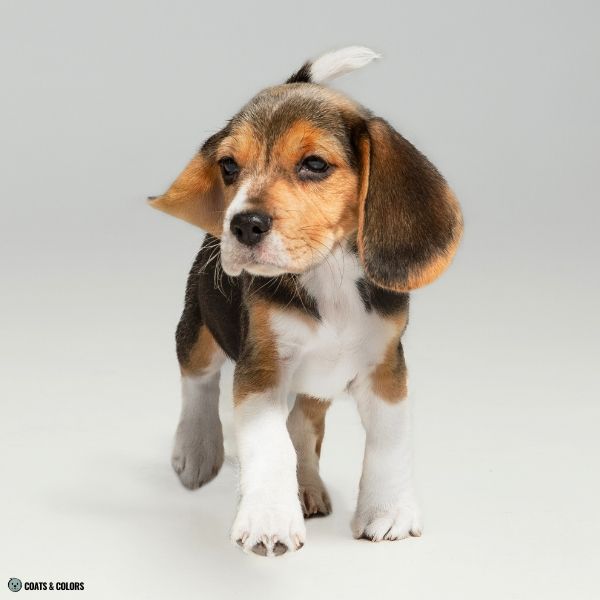

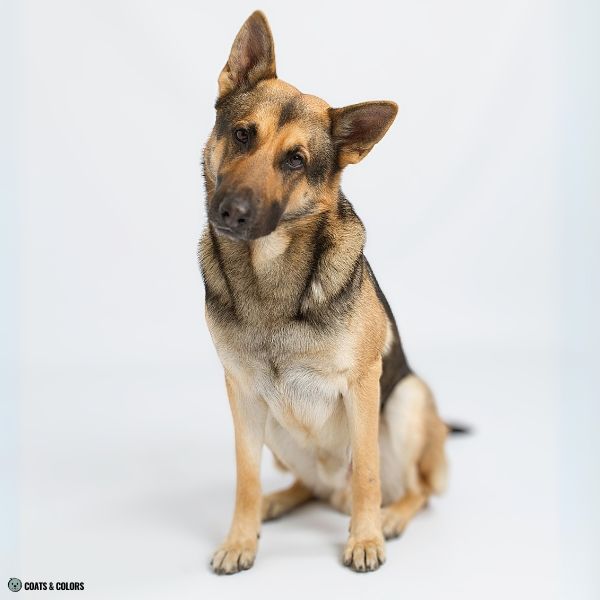
Some other patterns also present with a black back and a black cap on top of the forehead. Common patterns that might resemble creeping tan are dark sable (Ay/-) and tan point or agouti domino.
Some agouti patterns (aw/-) can also give a darkish back and more tan around the edges. And some agouti dogs have a saddle-type distribution of banded hairs (some of these dogs are aw/asa). However, most agoutis have at least some banded hairs on their face, under their eyes, and along their nose bar.



The term “creeping tan” is sometimes used for black and tan dogs with more than average tan.
It is normal for black and tan patterns to show some light undercoat bleeding through. This happens mainly in longer coats, for example behind the ears or on the shoulders.
And some black and tan dogs have tan markings that grow beyond their normal size and may start to blend into the black areas of the pattern. Heavy “running tan” can extend to the point where dogs have tan spectacles or large “open” tan areas covering much of their face.
But many keep some of their black nose bar.
Large points can happen due to carrying for recessive red (E/e) or maybe domino (E/eG or E/eA). But running tan or large points can also happen in E/E dogs, the reason for this is still unknown.
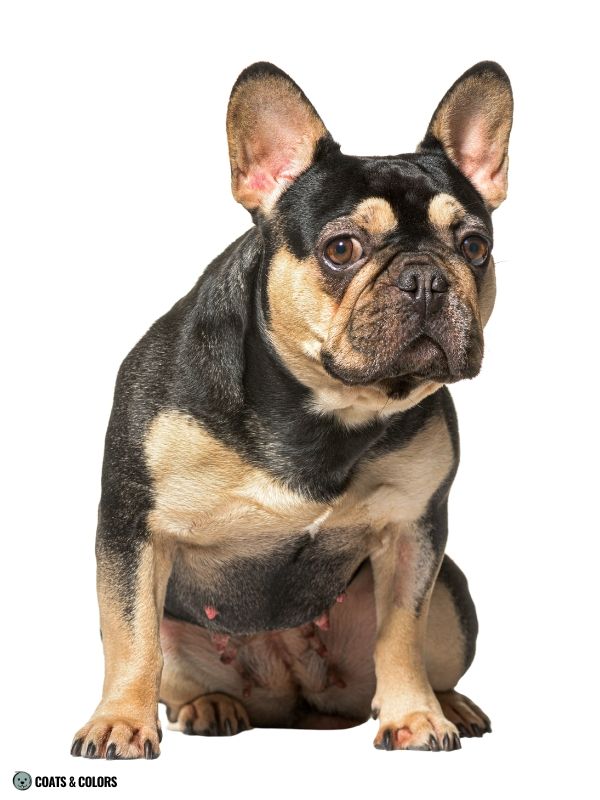
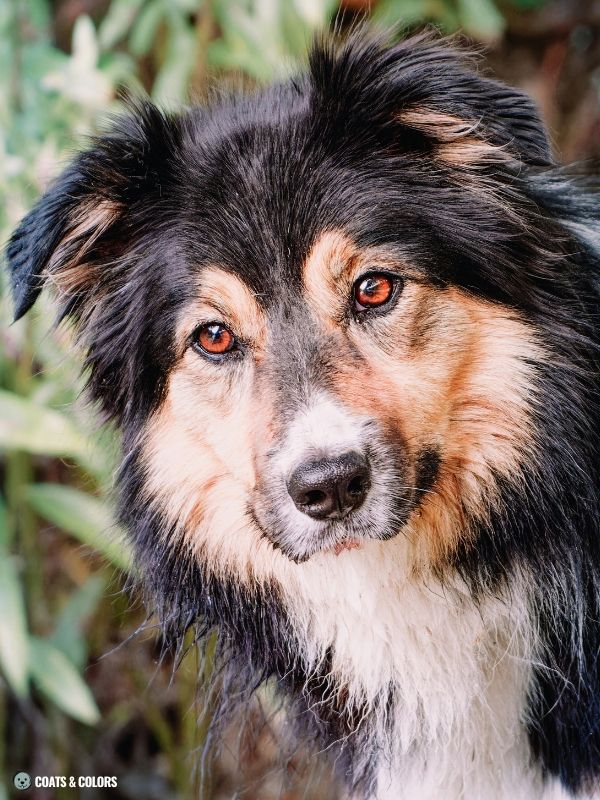
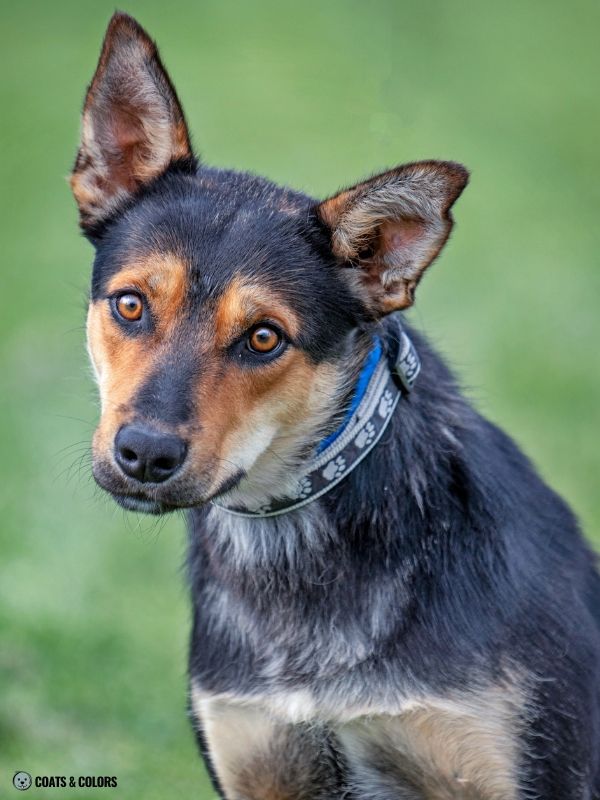
The difference to a creeping tan phenotype is that some “running tan” typically also affects dogs homozygous for tan points (at/at). But to get a real creeping tan pattern, dogs need a copy of saddle.
In other words:
Some more-than-expected tan is completely normal for a black and tan dog. However, creeping tan is a distinct intermediate phenotype somewhere between tan points and a classic black saddle.
Creeping Tan Genetics
Dogs with creeping tan coat have a phaeomelanin base color and eumelanin on their dorsal region.
The eumelanin color is black by default but can be modified to brown, blue (diluted black) or lilac (diluted brown) by the B locus and D locus, respectively.
The phaeomelanin color can vary in intensity from a pale cream to an intense rust or red color.
The A locus is responsible for the actual pattern, the distribution of these colors in the coat.
These are the ASIP alleles in their order of dominance:
ASIPDY > Ays
ASIPSY > aw
ASIPAG > asa
ASIPBS > at
ASIPBB > a
ASIPa
The ASIP* names are the official terms some companies chose to use. The A* nomenclature is just an alternative way to write these alleles down. For example, ASIPBB means the same as at.
For a long time, people thought a saddle was just a modified version of black and tan.
That was partly due to saddle puppies being born with tan points and old testing methods reporting both patterns as at. Some thought a now obsolete RALY modifier could turn tan pints into a saddle.
With old testing, any at/at result might actually mean the dog was homozygous for saddle ASIPBS/ASIPBS or homozygous for tan points ASIPBB/ASIPBB or heterozygous ASIPBS/ASIPBB.
But new A locus testing methods can now distinguish these patterns.
Creeping tan most commonly happens in dogs that are heterozygous for a saddle pattern but carry tan points ASIPBS/ASIPBB. In some cases, they may carry recessive black ASIPBS/a.
And the A locus often shows co-dominance in heterozygous dogs where both alleles get expressed.
This causes a continuum of phenotypes between the distinct traditional patterns. And the creeping tan phenotype fits in as a noticeable blend of both tan point and saddle tan.

And there is kind of an explanation for that:
With modern testing, each A locus allele represents a haplotype with a hair cycle promoter (HCP) and a ventral promoter (VP). For example, the wild type agouti pattern represents a VP2-HCP2 haplotype.
The agouti VP2 promoter is responsible for wild type tan markings on the eyebrows, cheeks, throat, chest, lower legs, and undersides.
The agouti HCP2 promoter causes hair banding in the rest of the coat by alternating between black eumelanin and red phaeomelanin pigment during hair growth.

All other patterns are derived mutant versions of the wild type:
Black and tan dogs are VP2–HCP3, VP2-HCP4, or VP2-HCP5.
Their VP2 promoter still gives wild type tan markings.
But their HCP3,4,5 promoters switch off hair banding in favor of solid dorsal hair.

Saddle tan dogs are VP1–HCP4.
Their VP1 promoter is responsible for upregulated body phaeomelanin with extended tan areas.
The HCP4 promoter switches off hair banding in favor of solid dorsal hair.
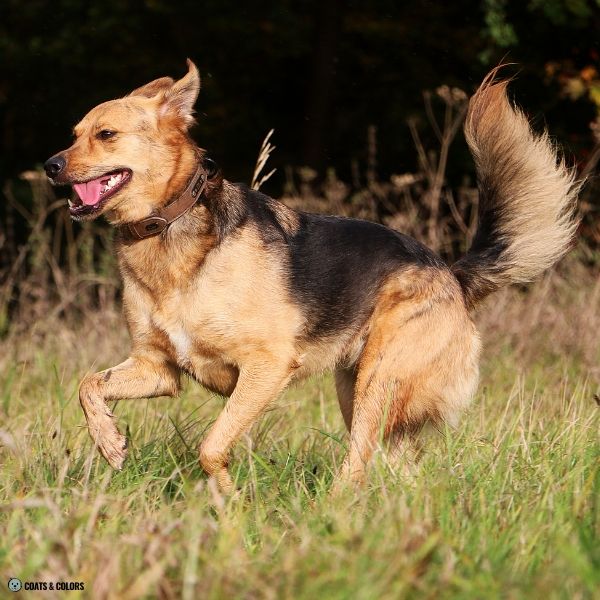
If you take a creeping tan dog with a ASIPBS/ASIPBB genotype, this translates into a VP1-HCP4/VP2-HCP3,4,5 promoter diplotype. All combinations of HCP4/HCP3,4,5 switch off hair banding.
But their VP1/VP2 promoters causes their tan areas to grow somewhere halfway between the wild type markings (VP2) and extended markings (VP1).
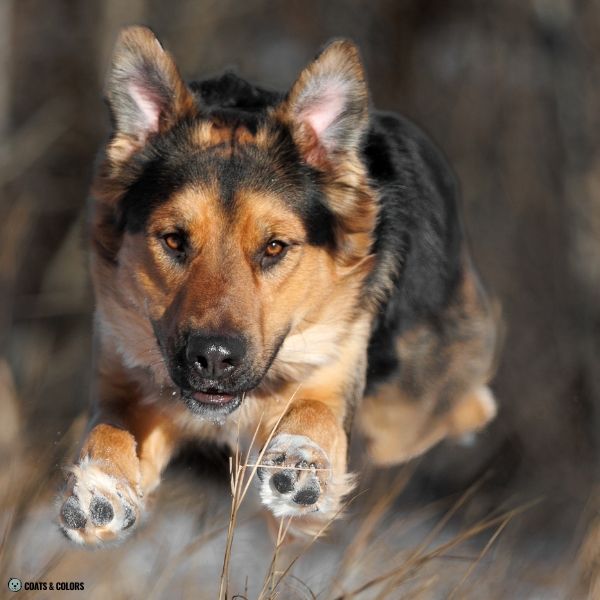
So you get a dog with solid black coat on its top but with tan areas that cover an area between what you would expect from a classic saddle and a classic tan point pattern.
However, the pattern may not always be obvious. Heterozygous saddlebacks can have anything from just very big tan points to creeping tan to a classic saddle.
If two dogs that looked like black and tan produce a creeping tan puppy, then one of the parents could have been creeping tan themselves, just with a very inconspicuous phenotype.
Learn More
Image Credits
© Olha Ivanchenko/canva.com
© dpcrestock/yayimages.com
© Connie Sinteur/canva.com
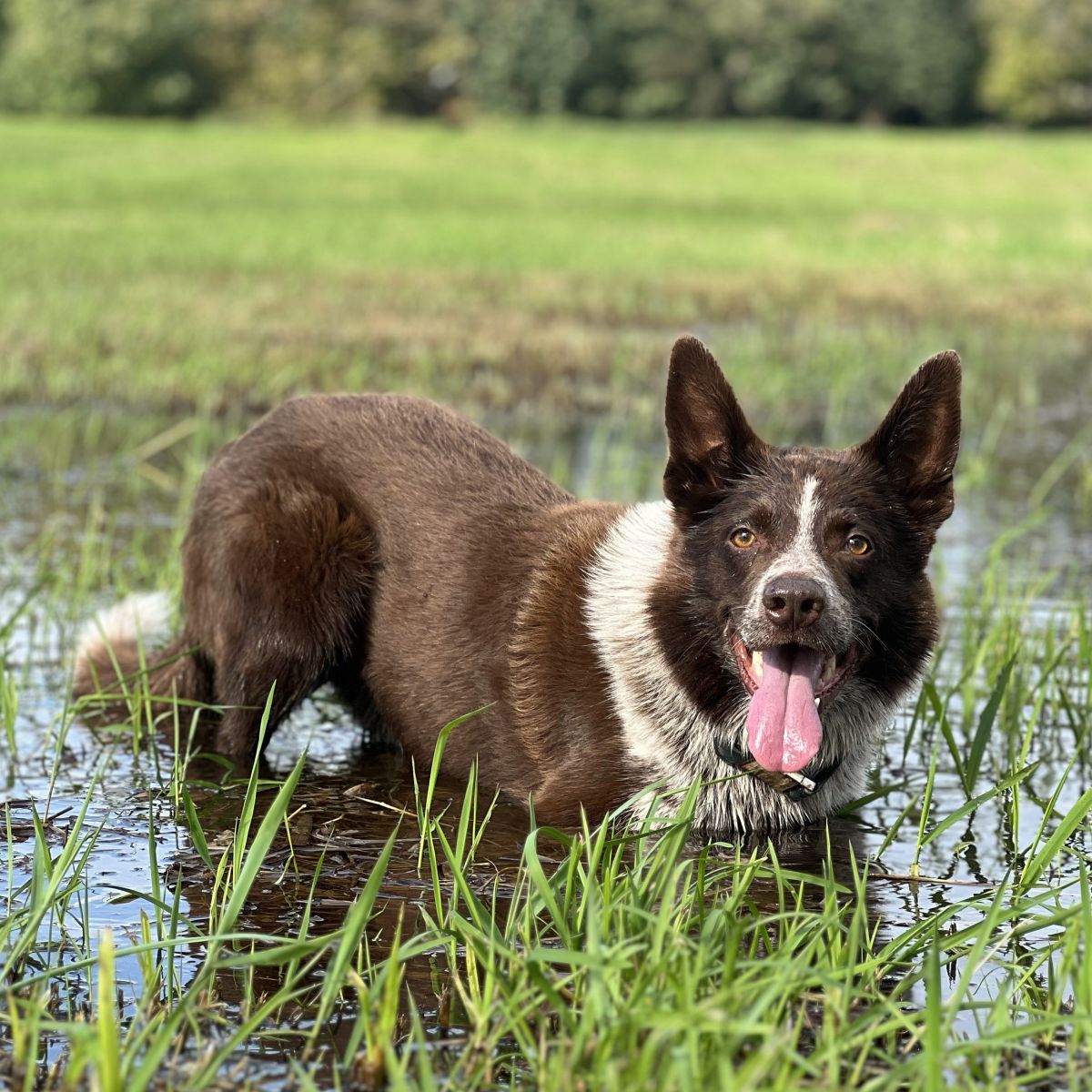
Hi! I’m Steffi. I am a biologist and a big time dog nerd. You are curious about coat color genetics? You’ve come to the right place! Read more.



